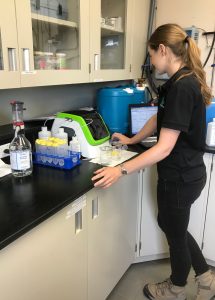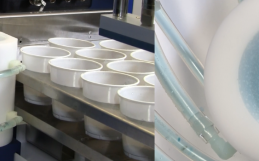During the summer months, naturally occurring compounds in surface waters can cause a musty or earthy taste and odour in city drinking water. These compounds are Geosmin and 2-Methylisoborneol (2-MIB) and can be detectable by some people at very low concentrations 1.

Figure 1: Baseline NOM levels of local source water being measured on the PeCOD® COD Analyzer at a water treatment facility to improve taste and odour monitoring.
Geosmin and 2-MIB are introduced to aquatic environments by blue-green algae or mould-like bacteria, encouraged by warmer weather. At very low concentrations, these compounds can create a musty and earthy taste and odour in drinking waters. Even though these compounds can have an unpleasant taste, there is no risk to consumers. The City’s drinking water is safe, and the off-taste and odour is strictly aesthetic 1.
Typically, residents can detect the unpleasant taste or odour from the end of August through November; however, the duration and intensity of these occurrences varies.
Current tools used to measure natural organic matter (NOM), like Total Organic Carbon (TOC), UV254, and UV Transmittance (UVT), have not shown a significant spike during taste and odour complaints. Therefore, water treatment operators do not have a tool sensitive to these compounds to allow them to make process changes to combat the bad tastes and odours.
One water treatment plant in the Niagara Region recently began using the PeCOD® COD Analyzer to measure baseline NOM levels of the source water (Figure 1). Water experts are exploring the PeCOD technology as a method to detect Geosmin and 2-MIB spikes in source water. Having a tool sensitive to these compounds, would allow operators to adjust treatment processes and reduce the occurrence of taste and odour events in drinking water.
1 City of St. Catharine’s, Environmental Services (2014). Seasonal taste and odour issues in drinking water. Retrieved from City of St. Catharine’s website: https://www.stcatharines.ca/en/livein/DrinkingWaterQuality.asp







